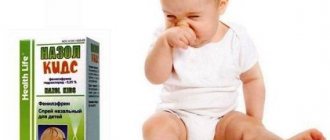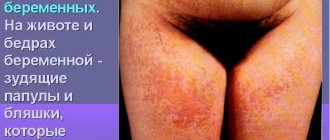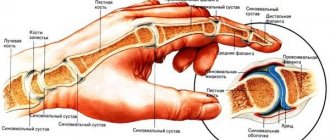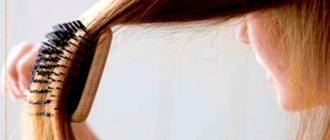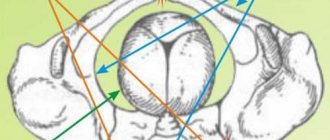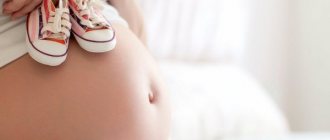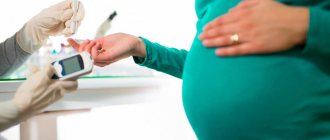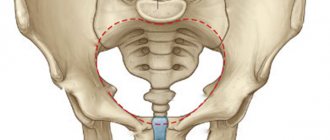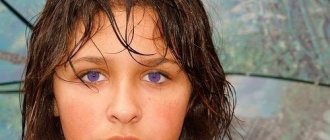Causes of increased hair count
The amount of hair on a baby’s body depends on several reasons:
- Heredity. If the parents have thick, thick hair, the child may be born with a head of hair and abundant lanugo.
- Nationality. Southerners have thicker hair - these are Spaniards, Italians, Caucasians, and residents of eastern countries.
- Race. The amount of hair also depends on whether people belong to a certain race, for example Mongoloid and Negroid. Their hair is very strong and thick.
If a newborn baby has hair on his ears, then think that maybe one of the factors listed above is to blame.
https://www.youtube.com/watch?v=UR00do57J1I
In this sense, the determining factors include:
- heredity;
- nationality;
- race.
For example, people originally from the south or east have the thickest hair compared to the rest of the country's inhabitants, which is ultimately passed on to their children, who often also have hair on their chests or limbs.
Sometimes experts associate a significantly increased amount of hair in a newborn with minor developmental anomalies and say that the child was born “with stigmas” (fused eyebrows, a hairy cape on the forehead, etc.).
Deviations include the so-called “island” covering, not characteristic of race or nationality, in which the newborn’s hair takes up space not only on the head. Having noticed them, the doctor should inform the parents about this, and also find out whether this feature of the baby is the only one and whether it is associated with more serious disorders.
Determination of acceptable boundaries of a phenomenon
During the development of the embryo, all kinds of processes are activated, and the formation of hair is natural.
A child is born with hair on his head, sometimes there is a lot of it, and in some cases it is a small fluff.
But sometimes a newborn is born with small hairs on the shoulders, back and ears.
Don't worry, in most cases this is a natural phenomenon and the hairs will disappear on their own after some time.
By the age of 3 months, the baby has only a small fluff on his body. If the bristles begin to harden and do not disappear by 4 months, then you should consult a doctor; it is likely that the child has genetic abnormalities. In this case, the pediatrician will refer you for a special examination.
Lanugo occurs while the fetus is still in the womb - at the 12th week of development.
As the fetus grows larger, the coarse hairs, which gradually die off, are replaced by unnoticeable fluff.
It is worth noting that lanugo in the fetus is a protective reaction of a small organism; it does not pose any danger.
In the womb, the baby’s body secretes a specific waxy substance that helps it pass unhindered through the birth canal during childbirth. Hairs are necessary to ensure that as much lubricant as possible lingers on the skin. In addition, the substance that accumulates on the bristles prevents amniotic fluid from affecting the baby’s skin.
As you can see, lanugo in a newborn is a common physiological phenomenon. A small bristle normalizes heat exchange in a child and can protect against minor scratches and injuries.
Some mothers wonder why the hair does not die off after the birth of a child? There are several reasons for this:
- the most common reason encountered in medical practice is prematurity. If a child is born prematurely, then his body is not yet fully formed and the hairs simply did not have time to disappear in time;
- stigmas, or abnormal hair growth. This disease is detected only after a complete examination of the newborn, prescribed by a doctor;
- heredity that cannot be discounted. For example, people with Caucasian roots have increased body hair. And if the baby has similar roots, then it is likely that lanugo will persist for a long time after birth;
- a pathology that is worth thinking about - hairs remain on the child’s body after several months have passed since birth. In this case, complex treatment is prescribed.
We invite you to familiarize yourself with Basma without henna for dark hair
Causes of bald spots in young children
25.08.2017 10:10 16161
Do you remember how your baby was born - with a bald head like a billiard ball or covered with hair? – SureJoy is interested. Some children are born bald, others, on the contrary, with hair on their heads. Do you know why?
The type of hair and its color depend on our genes and the ethnic group to which we belong. Your baby will have straight blonde hair because yours is the same! This is typical for most children, but there are exceptions.
Don't be surprised if your baby is fair and you are not.
Let's figure out together why babies' hair falls out. In fact, this process is completely natural, and there is nothing terrible in itself. Take a close look at your baby's first hairs: they are soft, light, and resemble fluff rather than human hair.
It is precisely because of their lightness and fragility that they can fall out: the baby’s head constantly rubs against something. This is, for example, a hat that you put on for a walk, the surface of a crib or a chaise longue - after all, the baby still lies a lot, even the softest comb can pull out a few hairs.
Click to get 5 video lessons about the secrets of raising and developing a child up to one year old!
Therefore, it is not surprising that during the first three months a child may develop bald patches - this baby fluff “gives way” to real, “adult” hair.
An alarming point: sometimes hair loss can be associated with rickets (more about rickets in infants{amp}gt;{amp}gt;{amp}gt;). Observe carefully and check if your baby has any of the following symptoms, in addition to hair loss:
- The skin color resembles marble;
- The baby sweats often;
- Refusal of mother's milk, tearfulness;
- Heat.
If at least one point matches, it is better to contact your pediatrician, he will either dispel your doubts or provide the necessary assistance.
What hair can be like
Children are born with different amounts and colors of hair. There are newborns who are completely bald, their bodies covered in places with grease. There are options for having a light, barely noticeable fluff. Parents are most frightened when a child has long, thick and dark hair that resembles stubble all over the body or in certain areas. When the hair is on the back or arms, it is not so noticeable when the baby is in an envelope or clothes.
Many parents are confused by the hair on their newborn's ears. Both mothers and fathers wonder how to get rid of excess hair. However, there is no need to force this, since the lanugo falls out quite quickly on its own. It only takes a few weeks for the hair to roll out and disappear from the baby's body.
New parents are also surprised by hair color, which often does not correspond to the genotype. For example, blondes give birth to a baby with black hair. It all depends on the amount of melanin pigment, which is formed at the genetic level and a certain hormonal background. The endocrine system takes part in the process of its production. A child's true hair color will only appear by age 5.
Causes of lanugo
Body hair in newborns is completely normal. Just like adult hair, such as eyebrows or eyelashes, lanugo is needed to protect the child. They retain a necessary substance in his body - lubricant, which plays an important role during intrauterine development and the birth process.
While the baby is in the stomach, this lubricant protects it from the effects of amniotic fluid, and during childbirth it facilitates the movement of the baby through the birth canal. They also serve as a heat keeper and protect the newborn’s delicate skin from minor injuries. Why don't they fall out immediately after birth? There may be several reasons:
- Prematurity of the newborn. This is the most common reason; in premature babies, such hair simply does not have time to fall out in a timely manner, since he is born earlier than planned;
- Abnormal hair development, or stigma. Only a doctor can identify the main cause of stigmas after examining the newborn;
- Heredity. If the baby has Caucasian or Eastern roots among his relatives, then the likelihood of preserving lanugo even after his birth increases;
- Pathological development. This is worth talking about if the hair does not fall out within several months after birth. In this case, complex treatment may be prescribed.
Important! Lanugo does not cause any discomfort to the newborn and does not cause restless sleep or poor appetite!
But why a baby may sleep poorly, read the article: Why does a newborn sleep poorly?{amp}gt;{amp}gt;{amp}gt;
The primary source of these phenomena needs to be looked for elsewhere, but this should not be connected in any way with embryonic hairs. Although the hair can be quite coarse and not at all like fluff, which is why some mothers conclude that it simply disturbs the baby. It also happens that a baby develops bristles, read this article: Bristles in a newborn{amp}gt;{amp}gt;{amp}gt;
The dangers of lanugo for babies
Thin and colorless hairs do not cause any discomfort to the baby and are harmless. Hair growth goes away within a few weeks. If parents think when they see lanugo in newborns that it is dangerous, they should pay attention to some important points:
- Lanugo are hairs that did not disappear during fetal development. They will definitely all fall out in a month or two, there is no need to panic about this.
Newborn baby with body hairs
- Hair on a baby's body cannot cause any problems. Even if hormone levels are elevated, parents do not need to worry.
- There is no need to believe the myths that hairs are dangerous and use traditional medicine to eliminate them. Only baths with the addition of medicinal herbs are useful for a child.
When to worry
There are cases when experts consider abundant hair growth in a newborn as an anomaly. Let's consider the following options:
- Stigmas. These are the so-called minor anomalies, among which there is a significant increase in the amount of hair in the baby. Hypertrichosis can be expressed by fused eyebrows or a triangular headland of hair on the forehead.
- "Island" hair covering. It is also considered a deviation from the norm, especially if the abundant presence of hair is not characteristic of the child’s race, nationality, or heredity;
- Hair on a child's ears remains for a long time, and also appears on other parts of the body, except the palms and feet. This is characteristic of Wolfman syndrome, most often combined with abnormalities of the outer parts of the ears. This is a fairly rare phenomenon, found mainly in India.
If you doubt whether your child has remnants of lanugo on his body or has any abnormality, consult a doctor for advice.
Caring for a newborn with lanugo
Usually grandmothers advise young mothers to get rid of this “stubble” as soon as possible and most often do this by rolling out the hair from the baby’s body with a crumb of bread. All this advice has long since outlived its usefulness. Rolling out, and even more so pulling out, such hairs can lead to injury to the skin, which carries with it much more serious consequences, for example, infection.
We suggest you read: Hair care products: useful tips
Note! Under no circumstances should you cut your hair, let alone shave your lanugo. All of these actions can harm the newborn.
If it seems to you that the hair began to bunch up in lumps after using body creams and resembles bristles even more, you need increased skin care for such a baby. The main thing that needs to be done is to ensure the necessary hygiene for such a baby:
- First of all, this is regular bathing, during which you can use a sponge or a special mitten. This will help quickly remove falling hairs from the newborn’s body; Read the current article: How to bathe a newborn?{amp}gt;{amp}gt;{amp}gt;
- It is better to do baths using any medicinal herbs. To find out what herbs you can use to bathe your baby, read the article: Herbs for bathing a newborn{amp}gt;{amp}gt;{amp}gt; Chamomile soothes the child’s skin after exposure to a washcloth, and the series helps relieve any irritation;
- Getting rid of frizz also depends on the baby's mobility. During any movement of the newborn, they are simply wiped off and, accordingly, fall out faster. You can help your newborn move by turning him from one side to the other. In order for the hair to disappear evenly, the baby also needs to be placed on his back.
Having answered the question why newborns have hair on their ears or on their backs, we understand that lanugos do not pose any danger, but, on the contrary, protect the little person. Such embryonic hairs also cannot be the cause of any serious problem.
Even if this indicates an increased hormonal level in the body, lanugo is absolutely not a terrible phenomenon. No matter how much hair there is on your baby’s body, don’t panic or be scared, it will soon fall out on its own.
- Crusts on a baby's head
- How to clean a newborn's nose?
- How to treat a newborn's navel?
Click here and get a nutrition guide for a nursing mother to protect your baby from allergies, colic and abdominal pain.
From the first days of a child's life, his hair will require careful care. They need to be washed as often as necessary, mainly during standard water procedures. As a means of washing hair, it is necessary to use special shampoo or soap for newborns, but immediately limit their use to once a week so as not to interfere with the healing process of the fontanel and not to provoke the formation of crusts.
To prevent hair loss in newborns, it is advisable to rinse your hair with a warm decoction of chamomile or string, which prevent the development of inflammatory processes. It is recommended to carefully examine the child’s scalp every day, and if there is flaking, remove scaly remains with a sparse comb. If it does not peel off, then for the purpose of prevention it must be moisturized with sterilized oil for children, rubbing it into the roots of the hair.
What if the hair doesn't disappear?
If after three weeks of daily water procedures in the bathroom the fuzz has not disappeared, bring this fact to the attention of your pediatrician. Increased hair growth in areas of the skin may represent stigma; such developmental anomalies must be studied by a specialist. Also, the reason for a large amount of vegetation on the baby’s dermis may be an increased level of testosterone, which is responsible for hair growth.
The pediatrician will prescribe the necessary tests for you and, based on their results, determine what the baby needs - a course of corrective medications or a visit to a geneticist.
Getting rid of lanugo
The hair on a newborn's ears will go away on its own; doctors recommend not to do any manipulation with it. This may take from several weeks to several months. Natural causes of hair loss include hormonal changes in the body after birth. Now the newborn does not have a close connection with the mother’s body, and this is also reflected in the condition of the hairline.
To avoid wiping the hair only in one place, where the baby most often moves or there is friction with bedding or a cap, try turning the baby on the other side, not putting a hat on him, and placing him on his stomach more often. The fetal fuzz should completely disappear by six months. By this time, old hair is replaced with new ones.
You can speed up the process with hygiene procedures. These are frequent warm baths with wiping problem areas with a mitten or soft sponge. In water, the hairs get wet and are easily removed without special products.
Features of structure and growth
A baby's hair is not much different from an adult's; the only difference is the pH of the scalp and the thickness of the hairs. The first hair that covers the baby's head and body appears in the womb, called lanugo or vellus.
They are very short and soft, contain virtually no pigment, and only in the eighth month of pregnancy are they partially replaced by pigmented ones.
By the time of birth, lanugo disappears in most babies, and only a small number of children who are born prematurely surprise their parents with a large number of hairs.
Often, older people recommend removing lanugo with their own hands, but doctors are categorically against such interference in the natural process of hair rolling.
Already at this stage, the first myth “Rolling out hair in newborns” arises. Compassionate grandmothers suggest soaking the crumb of bread and using this ball to roll up the newborn’s body hair.
These actions do not make any sense and do not help improve the baby’s well-being or sleep. This myth is related to the popular belief that hair appears on a baby’s body because the mother, while pregnant, kicked cats.
In the first years of life, vellus hairs are replaced by intermediate ones, this is especially noticeable in the first 3-4 months. At this time, up to 300 hairs can fall out daily, but this does not indicate rickets or other abnormalities in the child’s health.
By the age of six months, hairs again cover the baby’s head, but the most active growth of curls is observed at the age of 2-3 years.
Why does a child grow hair on his back?
Many babies are born with lanugo hairs, which develop from the time they are in the womb, from the twelfth week. Gradually the hairs die off, but are replaced by others.
The hairs gradually become thinner and less noticeable. For this reason, lanugo cannot pose a danger, because the main task is to protect delicate skin. Initially, the hairs retain a special substance secreted by the baby’s body and allow it to successfully develop in the womb.
At the same time, hair on a baby's back may appear after birth. Is this situation the basis for strong feelings? Before answering this question, it is important to understand why a baby may grow hair on his back after birth.
Reasons for hair growth on the back of infants:
Vellus hair on the body of a newborn is not a typical disease, despite the fact that the baby can experience discomfort and pain.
How does vellus hair develop in a newborn? After the birth of a child, redness of the delicate skin is expected to appear, and this process is usually called physiological erythema. After a couple of months, the phenomenon goes away, but it is replaced by peeling of the skin, after which small hairs are discovered.
Such hair on the body of a newborn is vellus, but it can be felt if you stroke the baby’s delicate body.
The difference between stubble and lanugo
However, in some cases, the embryonic fluff is in no hurry to fall out, and the hair curls and becomes stiff. The photograph of the baby clearly shows such bristles, which are popularly nicknamed “pokers” because of their curved ends.
Doctors explain this phenomenon by the adhesion of baby hairs and the remains of dead cells of the upper layer of skin to the secretion secreted by the sebaceous glands. This phenomenon occurs up to 3 months of age.
In any case, the doctors reassure us that this problem does not pose any danger to the child. So don’t worry too much about figuring out how to remove stubble from a newborn, since pediatricians believe that it should disappear on its own.
We suggest you read: Why does hair fall out? Hair loss due to water
The baby's embryonic fluff is soft and thin; over time, it rolls up and falls out completely painlessly for the child. If the hairs have not fallen out before birth, the process is completed in approximately the first two weeks.
The bristles do not cover the entire body; more often they are located between the vellus hairs. They feel more rigid and twisted to the touch. Such hairs are in no hurry to come out, and they can cause a lot of inconvenience to the child. They are often found on the ears. Even after taking a warm bath and wiping with a special mitten or sponge, they do not fall out.
Coarse hair on the ears of a newborn, according to young mothers, bothers children, pricks and causes discomfort. There are several ways to easily get rid of excess hair without harming your baby. Let's look at the most popular ones, according to reviews from mothers and doctors.
What is lanugo
The original thin fluff covers the body of the fetus even before it is born. It does not contain pigment and is present in absolutely all people and animals. Hair is the rudiments of the first follicles that form in the womb. This delicate fluff of a newborn is called lanugo. According to popular belief, hair on a newborn's ears appears when the mother experiences heartburn. But this has not been scientifically proven.
Hairs begin to form as early as the 12th week of fetal development and remain on the body for almost 8 months. They grow for a reason, but perform a very important function. In the mother's belly, the baby's body is covered with a special substance, the so-called vernix lubrication. It is similar to wax and protects the baby from the effects of amniotic fluid. It is also of great importance for easier passage of the baby through the birth canal at the time of birth.
The hairs on the fetal body retain such lubricant, preventing it from slipping off. Most often, lanugo falls out on its own before childbirth, around the 40th week of pregnancy. Most premature babies are born with such a fuzz, since the hairs have not yet had time to fall out. However, sometimes lanugo lingers on the body. Hair often remains on the ears of a newborn, but it happens that the forehead, back, and sometimes even the baby’s arms and legs are covered with it. We will consider further what this depends on.
Causes of hair loss in a newborn
The hair of babies, just like the curls of adults, signals various changes in the body.
Alopecia areata
This type is characterized by tufted hair loss, which leaves smooth patches of skin on the scalp. The process is so rapid that in just a few days the baby’s hair can fall out completely.
Main reasons:
- a malfunction of the immune system, in which the hair follicles are destroyed by the body's antibodies;
- mental trauma;
- imbalance of the thyroid gland;
- stress.
If left untreated, alopecia areata progresses to total.
Pocket hair loss in newborns - the reasons may be hidden even in the fright that the baby experienced once
This type of baldness is associated exclusively with children's hair and is unfamiliar to adults. The main reason lies in the frantic desire of parents to shave their baby's head.
Young parents ask when to cut a newborn's hair. But there is no need for this, except for following the ancient beliefs of ancient times
The second myth often gives rise to the question of when to cut the hair of a newborn. Thanks to this misconception, it is very easy to recognize toddlers on the playground who have recently celebrated their first anniversary.
Cutting the hair of a newborn and even a one-year-old baby does not have any physiological basis. Hair thickness is programmed genetically and does not depend on haircuts or lack thereof.
By the age of one year, children's hair becomes denser and grows faster. This fact is often mistakenly made as a consequence of the haircut.
When can you cut a newborn's hair? Then, when they bother him, growing to eye level
Occurs against the background of cessation of hair growth and its transition to a “coma” state. The reasons for this condition lie in injuries, overdose of drugs or vitamins, and surgery. Telogen effluvium is a temporary phenomenon and goes away after the causes are eliminated.
It happens that a child born with thick hair loses half of it within the first month, and the remaining hair noticeably thins and continues to fall off.
Why does a newborn's hair fall out? Because this phenomenon is closely related to the hormonal changes in his body, which has finally separated from the mother’s. And because color, like the amount of hair, depends not only on genes. Changed hormonal levels become the main reason for their loss.
Basically, we are talking about partial hair loss (intermediate stage), when the hair is renewed gradually, but sometimes they can all be eliminated at the same time. In this case, the newborn goes into the stage of complete baldness: old hair falls out so rapidly that new hair does not have time to grow, but even this can be avoided.
Bald patches that appear on your baby are quite normal. Regardless of the length and thickness of the hair, most often it occurs in places where the head is in constant contact with a cap or pillow and is a consequence of friction. To prevent the appearance of such bald spots, the baby must be turned more often from back to stomach or from one side to the other.
Most of the hair is on the head, but often parents pay attention to the fact that there is hair on the back of the newborn, it can also be on the shoulders. There the hairs are the thinnest, light or darker, and fall out quite quickly (in a few days). The hair on the head of newborns is thickest and coarsest.
For a baby, the process of hair loss is painless and unnoticeable, but if (according to the parents) it is accompanied by a number of other processes, for example, increased sweating, darkening of the skin, loud crying, etc., then you need to consult a doctor to rule out the presence of rickets, which is common among newborns diseases.
Proper care is the best prevention of any problems for the baby.
- Pay special attention to the choice of children's cosmetics, because the baby's skin is delicate and can react poorly to any component. Did you buy shampoo? Check the composition to see if the smell is too strong or the color is too rich. The more natural it looks, the better;
- Be sure to choose one that is labeled “hypoallergenic,” labeled “from birth,” and “tear-free.” It will be enough to use shampoo once or maximum twice a week, and at other times it is better to simply rinse the baby’s head with running or boiled water. Read, is it possible to wash a newborn with soap?{amp}gt;{amp}gt;{amp}gt;
- Never use your own shampoos and conditioners, they are absolutely not suitable for newborns! If there is no children's remedy, it is better to brew a string or chamomile - nature will be your best helper. Current article: Herbs for bathing a newborn{amp}gt;{amp}gt;{amp}gt;.
- The water temperature can be measured with a special thermometer; it is considered optimal for bathing newborns at around 37°;
- If the baby lies in different positions - on the tummy, on the side, and not just on the back, then fewer bald patches will form on the back of the head. And it will be more interesting for you to spend time with your child;
- Pay attention to the size of your baby's headdress: it should not be too tight for him. Seasonality is also important - in hats that are too warm, the child will sweat a lot. Both the first and second can lead to hair loss.
Now that you know why newborns lose hair on their heads and how to deal with it, you can be considered a trained specialist in solving this problem.
How to roll out back hair on babies?
When bathing, you are allowed to steam the baby’s shoulders and back, after which you can use folk remedies. With this approach, bristles should appear on the body, which signals the possibility of removing unwanted hair.
The following folk remedies are used for rolling out:
- black bread;
- fresh yeast;
- regular yeast dough;
- breast milk.
First of all, of course, this question interests mothers of girls. First, let's understand the terms. There are 3 types of hair:
— lanugo
(primordial fuzz) is fetal hair that appears in the third month of intrauterine development and falls out at approximately 36 weeks. In case of premature birth, the child may be born covered with the original down;
— vellus hair
- this is light, thin hair, no more than 1-2 cm in length, containing almost no pigment;
— shaft hair
- coarse, dark, thick terminal hair.
There are several concepts associated with excess hair growth. Hirsutism should be distinguished from hypertrichosis. Hypertrichosis
- this is congenital or acquired excess hair, independent of the content of androgens - the male fraction of hormones (testosterone, androstenedione, etc.) appearing mainly outside androgen-dependent areas (pubis, thigh, axillary region, abdomen, etc.).
The transformation of vellus hair into shaft hair occurs under the influence of androgens! This is called hirsutism
and occurs in androgen-dependent areas.
It is very important - the quantity and quality of hair is influenced by many factors - ethnic characteristics, systemic factors, the level of sex hormones and individual skin sensitivity to androgens.
Let's look at some of the reasons for excess hair growth in children:
1. If you start from the newborn period, especially in premature babies, often the entire surface of the body is covered with vellus hair - lanugo. Such hair gradually falls out, but patchy growth can persist throughout life. Sometimes this phenomenon is combined with certain developmental defects, which requires a more careful examination of the child.
2. If the child is growing rapidly, growth hormone in this case is actively manifested by hair growth on the forearms, legs, and is not observed in androgen-dependent areas (this is unlike other forms of excess hair growth). This is not a pathology.
3. The simplest option is constitutional
when either vellus or even shaft-type hair is actively growing, but this is a hereditary feature, and/or due to a certain nationality (typical of Jews, gypsies, residents of the Caucasus, Greeks, etc.).
4. The endocrinologist pays especially close attention to hair growth in girls in areas characteristic of the action of genital hormones - the pubic area, armpits, chest, abdomen, inner thigh (especially if hair growth begins before 8-9 years of age, earlier, this is called premature adrenarche), and in these cases it is important to know how it happened in women on the mother’s side and the mother herself. With this type of hair growth, the endocrinologist clarifies, with the help of a hormonal examination, the reasons for such hair growth - CAH (adrenal hyperplasia, when there is a genetic tendency to hair growth, expressed by premature maturation in the form of the appearance of excess hair growth, then in the form of a cycle disorder, early appearance of acne) . Other causes are also excluded - PPR (premature puberty), hypothyroidism (lack of thyroid hormones), hyperprolactinemia, PCOS (formation of polycystic ovary syndrome), Cushing's syndrome (overproduction of adrenal hormones), acromegaly (overproduction of growth hormone), and, of course, excluded extremely rare tumors of the ovaries or adrenal glands, the brain.
The examination is usually carried out by two doctors - a gynecologist and an endocrinologist.
5. Sometimes the cause of excess hair growth is taking medications such as GCS (glucocorticoids), cytostatics, etc.
6. If the cause of excess hair growth is not specified, then such a process is interpreted as idiopathic
hair growth, and it requires observation and repeated testing after 1-2 years.
The examination includes blood sampling for hormones: fraction of male hormones (total testosterone, free testosterone, dihydrotestosterone, androstenedione, 17-OH-progesterone, DHA-S, GSPS, prolactin, TSH, free T4, and when menstruation begins - on days 2-4 FSH, LH. An ultrasound of the pelvic organs and adrenal glands is also performed. Determination of bone age (x-ray of the hands), since the increased amount of male hormones in a girl closes the growth plates. Sometimes an MRI of the brain.
Excessive hair growth at the appointment is assessed using the official Ferrimon-Gallway
: (a result of more than 7 points is a sign of hormonal disorders):
Upper lip
1 point - single hairs along the outer edge, 2 points - small mustaches along the outer edge, 3 points - mustaches on half of the outer area, 4 points - mustaches up to the midline of the lip
Chin
1 point - single scattered hair, 2 points - scattered hair, but its growth is more abundant,
4 points - continuous and abundant hair growth.
Breast
1 point - hair around the nipple, 2 points - hair around the nipple and along the midline of the chest, 3 points - arched hair on ¾ of the chest, 4 points - continuous hair.
Upper back
1 point - isolated scattered hair, 2 points - a significant amount of scattered hair, 3 points - slight continuous hair growth, 4 points - continuous abundant hair growth,
Lower back
1 point - sacral fascicle (on the lower back in the form of a triangle), 2 points - sacral fascicle and some hair growth on the lateral surface of the back, 3 points - hair growth on ¾ of the lower back, 4 points - continuous hair growth,
Upper abdomen
1 point - individual hairs along the white line, 2 points - abundant hair growth along the white line, 3 points - hair growth on ½ of the upper abdomen, 4 points - continuous hair growth on the upper abdomen.
Lower abdomen
1 point - individual hairs along the white line, 2 points - stripes of hair along the white line, 3 points - wide stripes along the white line, 4 points - hair growth in the form of a triangle
Shoulder
1 point - scattered hair more than ¼ shoulder, 2 point - more abundant by ¼, but not complete, 3 point - completely insignificant, 4 point - completely abundant
Forearm
Hip
1 point and 2 points - slight continuous hair growth on the dorsal surface, 3 points and 4 points - continuous abundant hair growth on the dorsal surface.
Shin
1 point and 2 points - slight continuous hair growth on the dorsal surface, 3 points and 4 points - continuous abundant hair growth on the dorsal surface.
Popularly, such a disease is called “Poker” by some, and “infant bristle” by others. In fact, this is not a typical disease at all, although it can cause some discomfort to newborns and is sometimes painful.
After the birth of the baby, some redness of the skin appears on the body, in medical parlance called “physiological erythema.” After a couple of months, this phenomenon goes away, but sometimes some peeling occurs in this place, very similar to that which appears with. It is under this flaky skin that very small hairs are found, which can even be physically felt if you run your hand along the baby’s back.
Mom's questions
- Does hair color change in newborns? Children born with blond hair may darken as they age. The reason for this phenomenon is not fully understood. What is known is that the color of curls depends on the level of eumelanin, the amount of which changes over time. You can finally say whether your baby will be blond or brunette only by the age of two.
Hair color changes can last up to two years
- When does a newborn’s hair change, and why is it gone by 9-10 months? Children's trichologists advise not to worry about the presence or absence of hair at this age. The issue of a healthy scalp is much more important. It should be uniform in color, without redness, soft and free of flaking. Healthy skin will sooner or later have beautiful hair.
We suggest you read: Hair coming out in clumps: what to do, causes, vitamins, how to treat?
Photo of twins, whom nature has endowed with completely different hair and skin colors
- Is my newborn experiencing hair loss, is it related to the shampoo used? Firstly, with the arrival of a baby in the house, a special shampoo with a pH level of 4.5 to 6 should appear on the bathroom shelf. Even if you already have such an assistant, you should not resort to it every day, there is no need for this. Excessive use of shampoo can cause dry scalp and seborrheic dermatitis, which often leads to hair loss.
Caring for children's skin and hair should be carried out using special shampoos (“Good Care” - price from 140 rubles)
- Is a small bald spot dangerous? Small bald patches appear on the head due to the fact that the child spends the lion's share of the time lying on his back. As soon as the baby begins to actively move (roll over and crawl), the problem will resolve itself.
- How to deal with milk crusts? Before you figure out how to get rid of milk crusts and whether it’s worth doing, it’s worth understanding what they are.
In medical practice, exfoliated skin cells together with the secretion of the sebaceous glands are called “gneiss”, and popularly – milk crusts.
They are often mistakenly attributed to signs of allergies, although their appearance only indicates an insufficient level of hygiene of the child’s skin.
When the hair color of newborns changes, their structure may also change; at this moment, crusts actively appear on the scalp, requiring careful combing
To painlessly remove crusts, warm vegetable oil can be rubbed into the baby’s skin, which can be removed by washing with mild baby shampoo. After bath procedures, hair is combed out with a safe comb with rounded teeth.
How to remove ear hair from a newborn
The accumulation of hair on the ears does not go away on its own, especially if it is not thin fluff that grows there, but hard bristles. What can mothers do to get rid of them painlessly? Everyone knows that hair is wiped more often in places of frequent friction, so you need to rub your ears using different methods. This can occur during active movements of the child; wearing a bonnet or cap will also contribute to the friction of the fabric against the hair on the baby’s ears.
While bathing, rub them lightly with soft gloves, swabs or a sponge washcloth. All rubbing actions will help you quickly deal with the problem of unwanted hair.
What kind of hair does a newborn have?
A newborn may be born completely hairless, covered only with grease, or with barely noticeable light fluff, or, on the contrary, may have long and thick dark hair. The last option surprises parents if this is completely uncharacteristic of their genotype, for example, when they are both blond.
This factor is not decisive, because the hair color of newborns depends on the amount of melanin - a special pigment inherent at the genetic level and regulated with the participation of the endocrine system, which forms the general hormonal background.
And due to the fact that the baby’s hair grows in the womb, at the time of birth it can have an impressive length. But by 2-3 months they will still fall out, after which new hair will begin to appear in the vacant space, which will receive a shade characteristic of the child. The final color inherited from the parents will only appear in the fifth year of the baby’s life.
Why does she appear?
Where and why does the “poker” appear in a baby? It turns out that it grows on the body and even on the baby’s face when he is still in the womb, but if development proceeds normally, then after 36 weeks these small hairs are lost. In rare cases, they do not fall out and become a so-called atavism. According to Darwin's theory of human origins, people had hair all over their bodies, but only partially remained in the course of evolution. The bristles that remain on some newborn children in our time are as atavistic an element as the coccyx or appendix.
It turns out that there is nothing abnormal or dangerous in this phenomenon; one could safely ignore it if it did not cause the baby so much inconvenience, and often even acute pain. That is why there was a need to invent ways to get rid of unnecessary coarse hair that grows completely pointlessly.
Rolling out bread ball and dough
Since ancient times, excess hairs have been rolled out using a crumb rolled into a ball. To do this, you need to take freshly baked bread, remove only the soft part with your hands and roll out a round even ball in your palms.
After taking a warm bath, the baby’s body will warm up, the skin pores will expand, and only then can you begin to act. The ball is rolled over the hair on the newborn's ear for 2 or 3 minutes. Then gently blot the friction points with a dry and soft diaper. If you notice redness on the skin, the best way, according to our grandmothers, is to wipe such spots with a few drops of breast milk. It has not only a soothing, but also an anti-inflammatory effect on the baby’s delicate skin.
Another effective way to roll out bristles with dough. It consists of 2 tablespoons of water, a little flour and a teaspoon of vegetable oil. Knead the dough and roll out a small but tight ball. They roll out hairs that stick to the dough. They will be noticeable visually.
Let's get acquainted with another effective method, tested by our grandmothers and mothers. Boil one hard-boiled egg. Cool it until warm. Before the procedure, the baby’s body is lubricated with baby oil or cream, and an egg is rolled over the skin on top of it.
You need to do the movements for 5 minutes. The child will enjoy the warm massage and will not resist. Friction will force the hairs to leave their growth areas after the skin warms up.
Honey pellet
Before using this method to remove excess hair on a baby’s body, check if he is allergic to honey. To do this, apply a small amount to your hand and wipe with a damp cloth after a couple of minutes. If there is no red spot left, you can use this method calmly.
Heat the honey a little in a water bath so that it melts but is not hot. Then they lay it on the bristles and cover it with a bandage folded several times. Everything is wrapped in plastic film on top. This compress should be held for 5 minutes, and then removed and wiped with warm water. With this procedure, everything will go away; the hair on the ears of a newborn baby will gently come out of the skin and will not appear again.
You need to take half a teaspoon of thick honey and three drops of aloe juice. You need to heat and mix the solution in a water bath. After this, you need to cool it and roll it into a ball. The lump should be rolled in the stubble area. Honey, due to its stickiness, causes hairs to stick. In newborns, body hair does not have roots, so removing it will not be a painful plucking process similar to epilation. They should come out of the pores easily. It is only important to take into account that honey is an allergenic product, so it is not suitable for all children.
Helping your child get rid of stubble
You can reduce discomfort for your child using traditional care measures. It is necessary to regularly bathe the baby with soap and a soft sponge.
Try to use a minimum of cosmetic products; one shampoo per week is enough.
Note! Do not shave the bristles with a razor or cut them with scissors. This makes it tougher and more prickly. Hair growth may only increase , and you risk damaging your baby's delicate skin.
Traditional methods
Several recommendations will help reduce discomfort. They are recommended to be used by E. Komarovsky.
- Using bread crumb. First bathe the baby in the bath; it is important that the skin is sufficiently steamed. Then we take the crumb from the freshly baked bread and roll it into a ball. Then we roll over the place where the bristles have formed. Do the procedure for at least 2-3 minutes. Then wipe the baby’s body with a soft towel or diaper.
- The use of bee honey, but first make sure that the baby is not allergic to it. You need to heat the honey a little so that it is not hot. Lubricate the baby's back and cover the top with gauze. Place plastic wrap on top of it. Hold the child with the compress for 3-5 minutes, then remove the bandage and wash the back with plenty of warm running water. All hairs will come out of the skin and will no longer bother the baby.
Rolling out the bristles with bread or dough saves the baby from discomfort
- Rolling out the dough. To do this you will need warm water, flour, sunflower oil. Knead the dough tightly, form it into a ball, which we then use to roll out the back of the newborn. All the bristles will remain on the ball and will be visible.
- Using a boiled egg. Cool the finished chicken egg, lubricate the baby's skin with baby cream and roll the egg over the area where the hairs are present. Do this procedure for at least 5 minutes.
Rolling out small prickly hairs with an egg is effective only on steamed baby skin
Can medications be used?
In medical practice, the use of drugs to remove tickles (bristles) in newborns does not exist. A massage with baby oil helps your baby cope with itching and discomfort.
To prevent skin rashes due to “poker” in a child, you can use antihistamines: Fenistil in the form of drops and ointment for topical use.
Reviews about these methods
Parents' opinions were divided. Some are categorically against forcible removal of bristles and say that their babies’ hair disappeared on its own, some at the age of 8 months. Others decided to try traditional methods. Rolling out the bread crumb helped get rid of unnecessary hairs in two days.
For others, only water procedures and wiping with a glove helped. Within two weeks, all the bristles came out and did not appear again.
The article describes in detail why a child may grow hair on the ears, back or forehead after birth, how to treat their appearance, and how to distinguish lanugo remnants from developmental abnormalities and hormonal imbalances. Simple folk methods of getting rid of unnecessary hairs on the body without causing harm or pain to the baby are also described.
Diseases as a cause of hair growth
Corneli de Lange syndrome. With it, active hair growth on uncharacteristic parts of the body is accompanied by a delay in development and growth. Not only external but also skeletal abnormalities occur.
Hirsutism. Hormonal imbalance as a result of non-standard functioning of the endocrine system due to a hereditary factor. The hair on your baby's back grows quickly. Peak growth occurs during adolescence. It is normal and does not require special treatment. Hair is removed using cosmetic procedures.
Hypertrichosis. It occurs as a result of disruption of the nervous system, metabolism, the development of a malignant tumor, or a natural genetic abnormality in the type of DNA. The latter is not a cause for concern.
Congenital dysfunction of the adrenal cortex. Leads to active production of androgens. Brings the body closer to the male type. Female characteristics develop poorly. There is rapid growth, development of muscle mass, and a decrease in voice tone.
Excess body weight. Promotes the development of insulin-resistant dependence. This affects the production of male hormones by the adrenal glands. Untimely treatment inhibits sexual development. In girls it leads to ovarian dysfunction.
If by three months the hair on the child’s back does not disappear, you need to contact several specialists: a pediatrician, a neurologist, a geneticist, to rule out serious diseases.
When a newborn has a lot of hair on his back, it can lead to unpleasant consequences. Due to the imperfect structure of the skin surface and its tendency to expand pores, a phenomenon such as “Poker” may develop. The structure of the surface of the baby's skin resembles that of a pig, with a dark dot. This condition is accompanied by symptoms:
- increased irritability, moodiness;
- frequent sleep interruptions;
- we cry when the injured skin touches the surface;
- lethargy, loss of appetite.
The filling of pores occurs due to the accumulation of sebaceous gland secretions mixed with dead skin particles and lanugo hairs.
To eliminate discomfort, doctors recommend taking water procedures more often. Maintain hygiene. After bathing, wipe the baby's skin with olive oil or baby cream using a cotton swab. There are traditional ways to get rid of accumulations in the pores.
- Soaked bread crumb is applied to the film and applied to the back for 10-15 minutes. After 5-6 procedures, the pores are cleaned and discomfort disappears.
- The older generation advises using bread crumbs soaked in breast milk. After bathing, the accumulations are rolled out of the pores with circular movements of the soaked crumb along the back. This is done carefully so as not to injure the epidermis or cause a bacterial infection.
- You should not use depilatory products during infancy: thick sticky consistencies, tweezers, chemical creams, abrasive substances.
Hair removal methods
If a child has hair growing on his back as a result of a hereditary factor, he has to put up with it. The only way out of the situation is their depilation. This is especially true for girls.
- Removing hair from a child's skin is not recommended until the age of 8. From this age, depilation is carried out only with the written consent of the parent.
- From the age of 15, depilation is available in any medical institution or beauty salon. This procedure is less painful in childhood than in adults, since the hair structure is thinner.
- You can get rid of excess vegetation at home. To do this, they are shaved and every other day treated with a 3% solution of hydrogen peroxide mixed with soap. After several sessions, the hair becomes thin, breaks off, and its growth slows down.
When your child grows hair on his back, you shouldn’t panic. In most cases, this is a natural condition of the baby or the presence of a hereditary factor. If growth causes suspicion of the development of any disease, you should consult a specialist.
